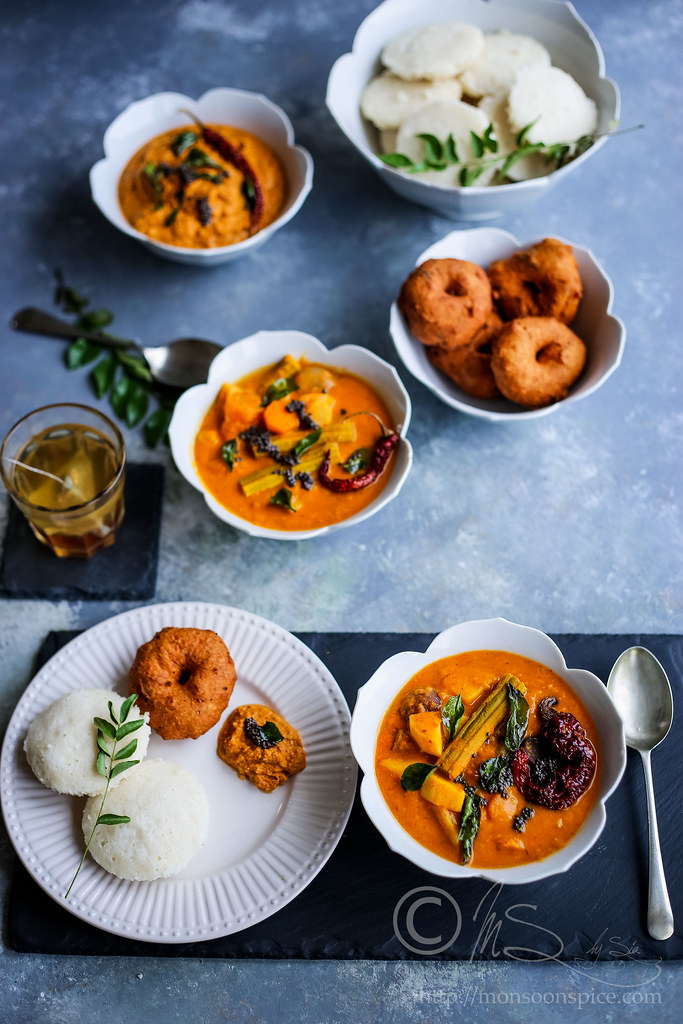
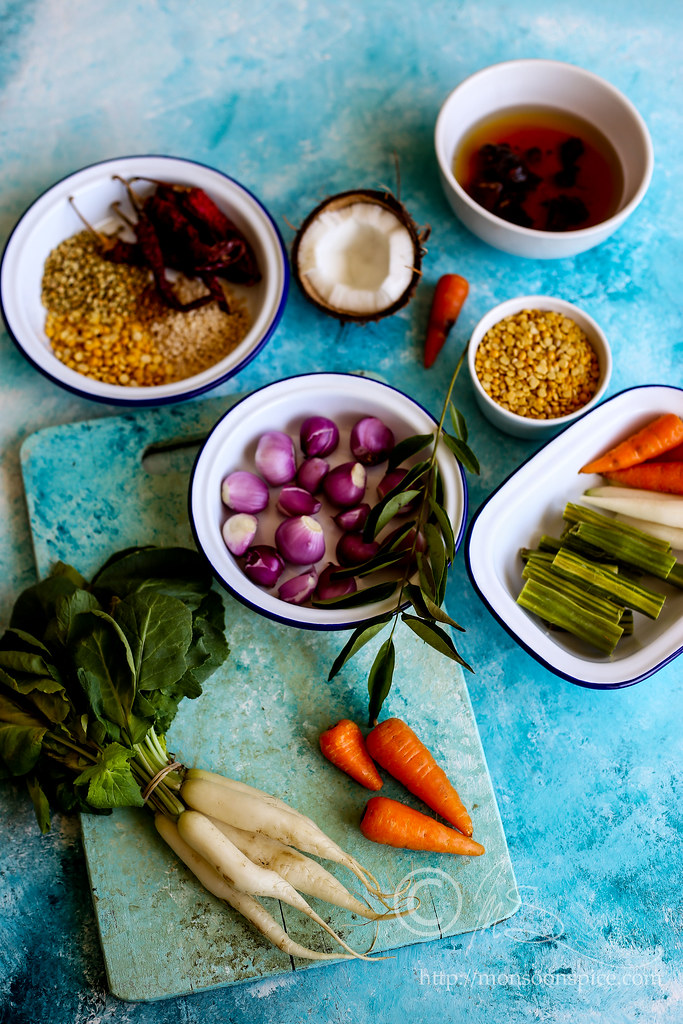
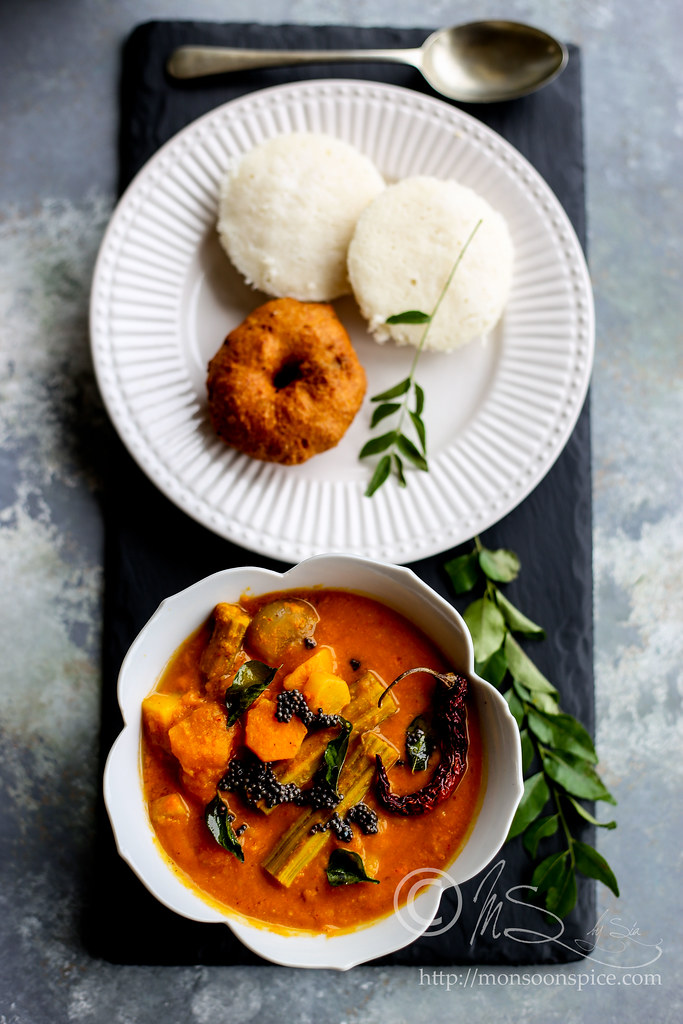




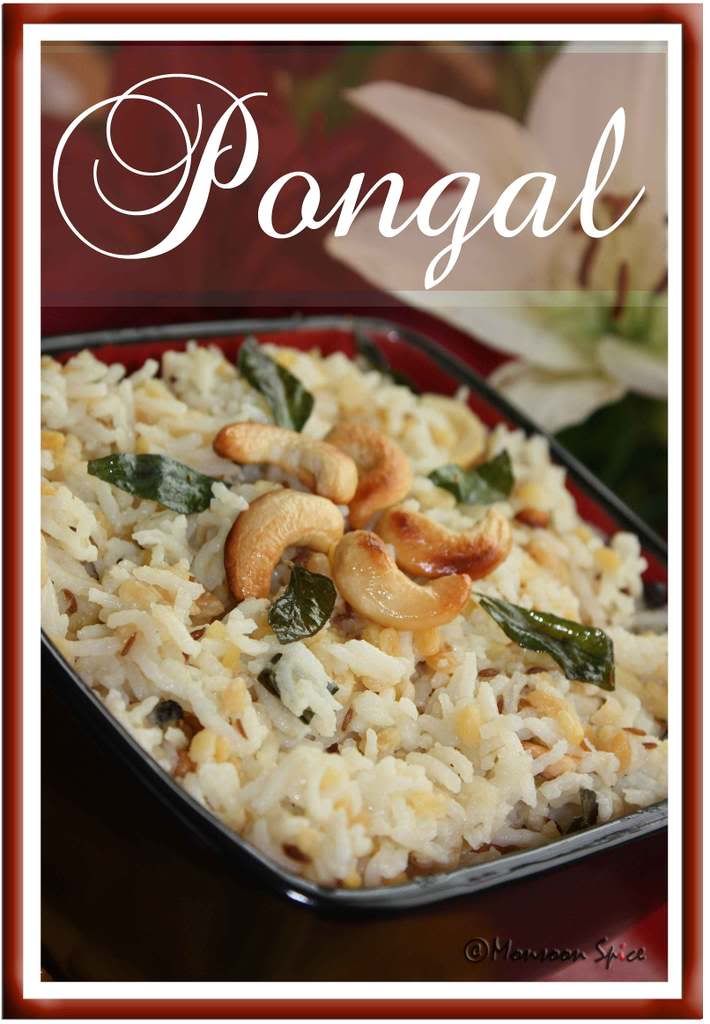
“Make sure you don’t insult Pongal by using just a spoonful of Thuppa. Be generous with Thuppa when you make Pongal because it is God’s food. If you can’t make Pongal with lots of love and Ghee then it is not fit for you, your family and your God.”I try to remember my Doddamma’s pearls of wisdom like these while cooking. Some foods are just divine and they are meant to be cooked that way. This post is very dear to me and it is dedicated to two people who are very close to my heart. In two days it will be the first death anniversary of my Doddappa. It will be a grand celebration because he believed in celebrating life and death, which was just the beginning of new life. Doddappa and Doddamma, I miss you. I am sending thsi food from heaven to Susan of the Well Seasoned Cook, who is hosting My Legume Love Affair-Second Helping.
 Print This Recipe
Print This Recipe Ingredients:
1½ cups Rice (preferably Sona Masuri or you can use Basmati as I have used here)
1 cup Yellow Moong Dal/Split Green Gram
½ cup Cashews
8 cups Milk+Water (I used 1 cup Milk+7 cups Water)
2-3 Green Chillies, slit (Optional)
1 inch Ginger
1 tsp Black Pepper Corns, lightly crushed or used as whole
1 tsp Jeera/Cumin Seeds
Few Curry Leaves
3-4 tbsp Thuppa/Ghee/Clarified Butter
Salt to taste
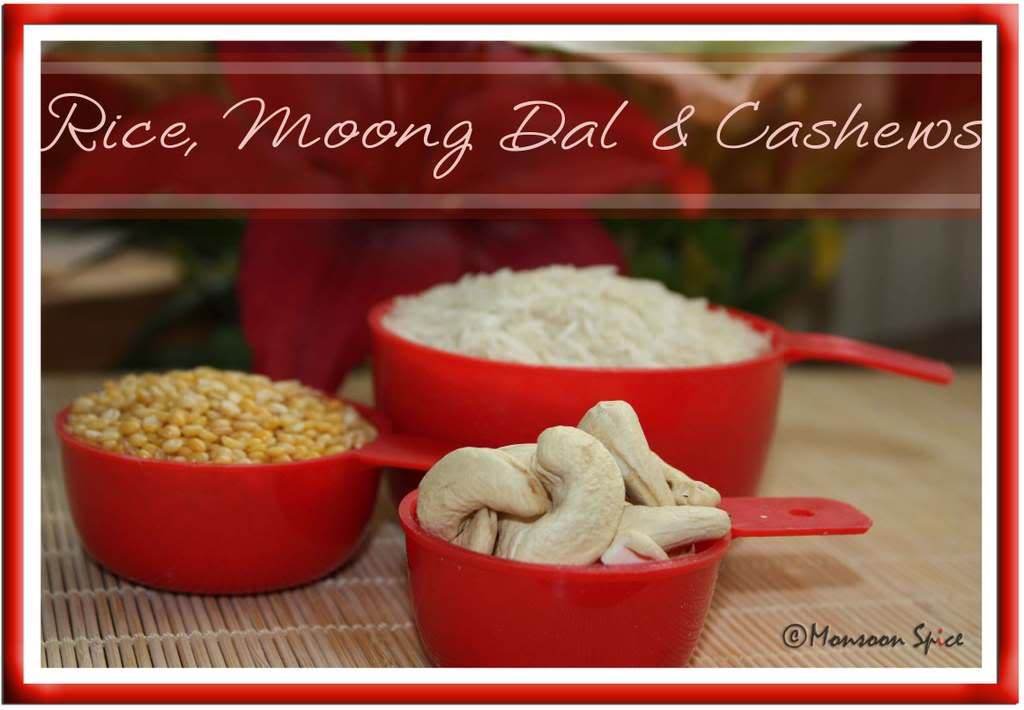
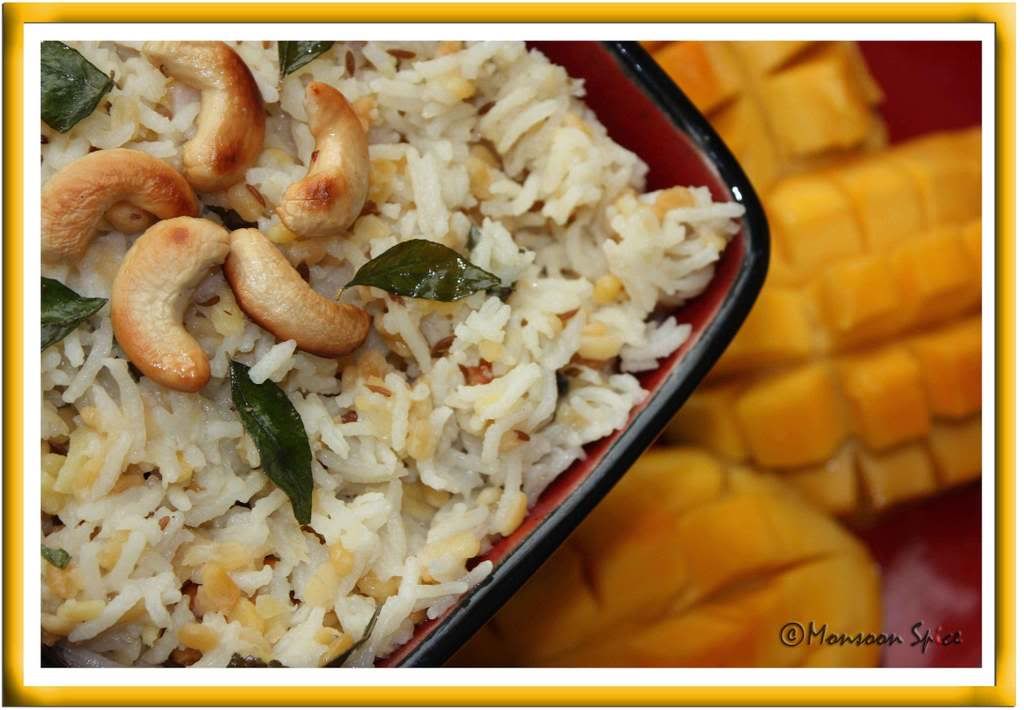
 I invite you all to celebrate Jihva for Ingredients with this month’s theme JFI-Soya. Choice of Soya products, the recipe, ingredients, method etc is entirely left to you. I would greatly appreciate if you can send me any Vegan or Vegetarian recipes but I leave it to your choice. Soya foods include tofu, tempeh, textured vegetable protein (chunks, mince etc), miso, soya sauces, soya oil and margarine, and soya dairy alternatives.
I invite you all to celebrate Jihva for Ingredients with this month’s theme JFI-Soya. Choice of Soya products, the recipe, ingredients, method etc is entirely left to you. I would greatly appreciate if you can send me any Vegan or Vegetarian recipes but I leave it to your choice. Soya foods include tofu, tempeh, textured vegetable protein (chunks, mince etc), miso, soya sauces, soya oil and margarine, and soya dairy alternatives. Tomato KulambuIngredients:
Tomato KulambuIngredients:Method:
Heat little oil and fry green chillies, onion and curry leaves.
Add ground paste-I,tomato pices, turmeric powder and little water.
Cover and cook till tomatoes become soft.
Add tamarind extract and cook for few minutes in reduced flame.
Add salt, jaggary, ground paste-II and allow the gravy to come to boiling point.
Remove from fire and serve hot with plain rice.
Variations:
Omit tamarind extract and add thick coconut extract.
You can add potatoes and drumsticks along with tomatoes.
Final Verdict:
Wooha… Hot, spicy, peppery, delicious… Tomato Kulambu was all these and much more. Although it was spicy it also had a touch of sour and sweetness to it from tamarind extract and jaggary I added. The colour was rich and dark, reminded me of ruby studded gold bowl;) It did certainly kicked my cold;) I love spicy food and nothing can beat Chettinadu Kulambu. It was perfect for our cold winter night’s dinner.
 Tomato Kulambu
Tomato Kulambu
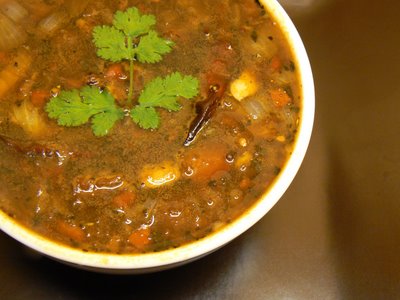
Chettinad Garlic Kulambu
Ingredients:
3 pods Garlic
11/2 tsp Black Pepper
1/2 cup of Small Onions, peeled
1/4 tsp Dhania/Coriander Powder
1 Lemon sized Tamarind
1 tbsp Jaggery
For Seasoning:
1 tsp Mustard Seeds
1/4 tsp Hing/Asafoetida
Few Curry Leaves
2 Dry Red Chillies
1 tbsp Oil
Pound Coarsely:
3 Tomatoes
1 big Onion or 10 small peeled Onions
 Hot and Spicy Chettinad Garlic Kulambu
Hot and Spicy Chettinad Garlic Kulambu
Method:
Peel the garlic and crush them in mortar.
Soak tamarind in water and extract 2 cups of puree.
Fry pepper in ghee and crush coarsely.
In a pan, heat oil and add seasoning ingredients, garlic, small onions and crushed pepper.
Fry the above for few minutes and then add dhania powder, pound mixture and fry for few minutes.
To this add tamarind extract, salt, jaggery and boil till oil floats.
Serve hot with rice or idlis.
Variations:
Add sliced brinjal/egg plant or okra/ladies finger instead of garlic.